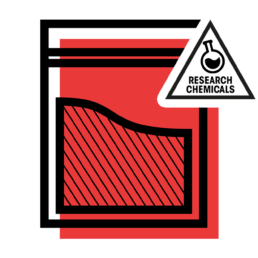Methoxetamine is a research chemical with a dissociative mode of action that is similar in chemical structure to ketamine and PCP. Compared to ketamine, however, the effect of methoxetamine is more intense at the same dosage, the onset lasts considerably longer and the effect lasts longer. As methoxetamine is a research chemical, there is little scientific evidence on the risks and long-term effects. Information on dosage, effects and risk reduction is mainly based on user reports.
The described consumed dose of methoxetamine ranges between 5 and 60 milligrams (nasal consumption), whereby the spectrum of effects changes greatly with increasing dosage. There is therefore no 'usual' dosage at which the typical and desired effects occur. Many users report that they "feel their way" to the desired effect with small dosages. At low doses, methoxetamine has a mood-enhancing and relaxing effect; feelings of satisfaction, empathy and connection with other people can occur. In higher doses, it has a stimulating effect, which can be euphoric or even lead to manic thinking. Sensory and physical perception changes increasingly with higher doses, optical hallucinations (especially with eyes closed) or the feeling of floating can occur. Even higher doses can lead to an extremely altered perception of space and time - as with ketamine, the feeling of a complete detachment of consciousness from the body and reality can occur. The separate experience of body and consciousness with dream-like, visionary or spiritual hallucinations is particularly typical for high doses. Whether these effects are perceived as nightmarish or euphoric depends on many different factors and cannot be predicted.
Side effects such as nausea and dizziness can occur after taking methoxetamine. Motor skills and coordination can be severely impaired, which increases the risk of accidents. Methoxetamine is a substance with very profound effects on the psyche, as the perception of reality is radically altered under the influence of methoxetamine. The effects of the substance can cause disorganised thinking and even complete confusion (e.g. forgetting that one is under the influence of a psychoactive substance at all) and depersonalisation. Methoxetamine can therefore also trigger horror trips. Many users report that they feel a strong need to redose and consume more methoxetamine than they had actually planned. As with all psychedelic substances, there is the possibility of unwanted, extremely intense experiences that can be life-changing.
For dissociative anaesthetics in general, mixed use with downers (alcohol, benzodiazepines, opiates, GHB...) is very risky, as it can lead to loss of consciousness and vomiting - a combination that is potentially life-threatening. Many users explicitly advise against mixed consumption with alcohol. The mixed use of methoxetamine with MDMA and MDMA-like substances probably harbours particular risks. One death has been reported following mixed use with MDAI. Several deaths have already been reported across Europe in connection with methoxetamine use.
MXE/methoxetamine has been included in the Narcotic Substances Act since June 2019. The acquisition, possession, import and export, transfer to and procurement for others (transfer and sale) are punishable by law. Consumers who violate the SMG must expect a mandatory visit to a public health officer (in Vienna: the outpatient centre of the Addiction and Drug Coordination). There, health-related measures may be ordered and a drug test may be expected. If you adhere to these requirements, there will be no court proceedings.
Status: 2012

